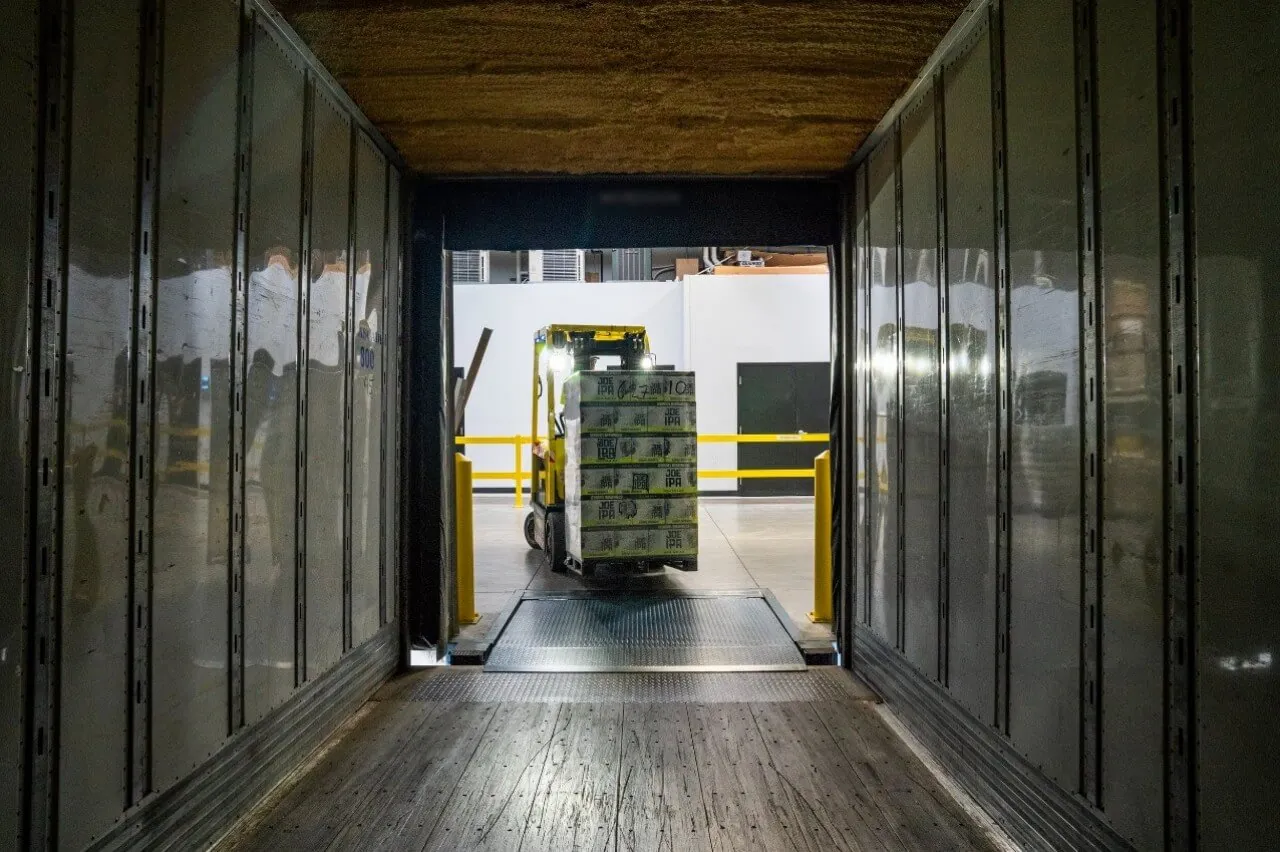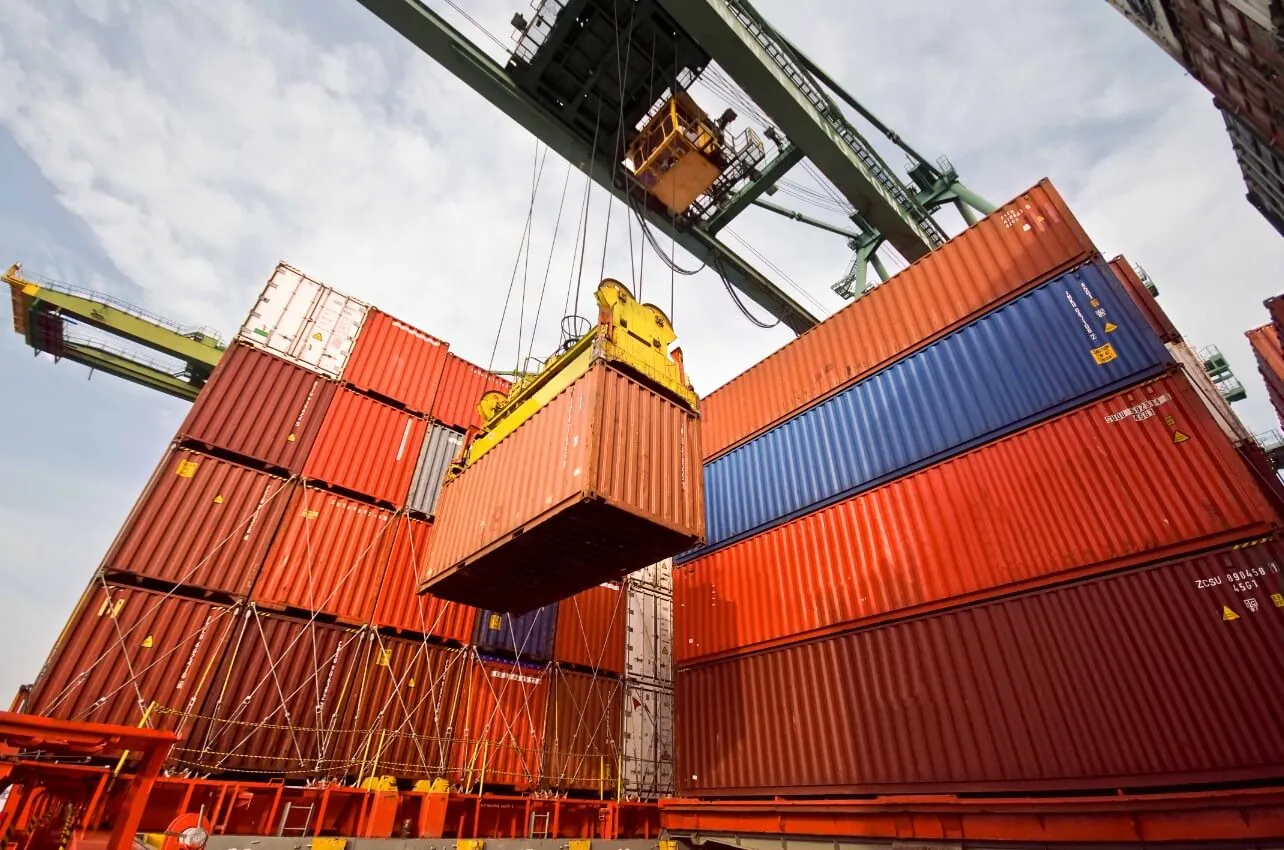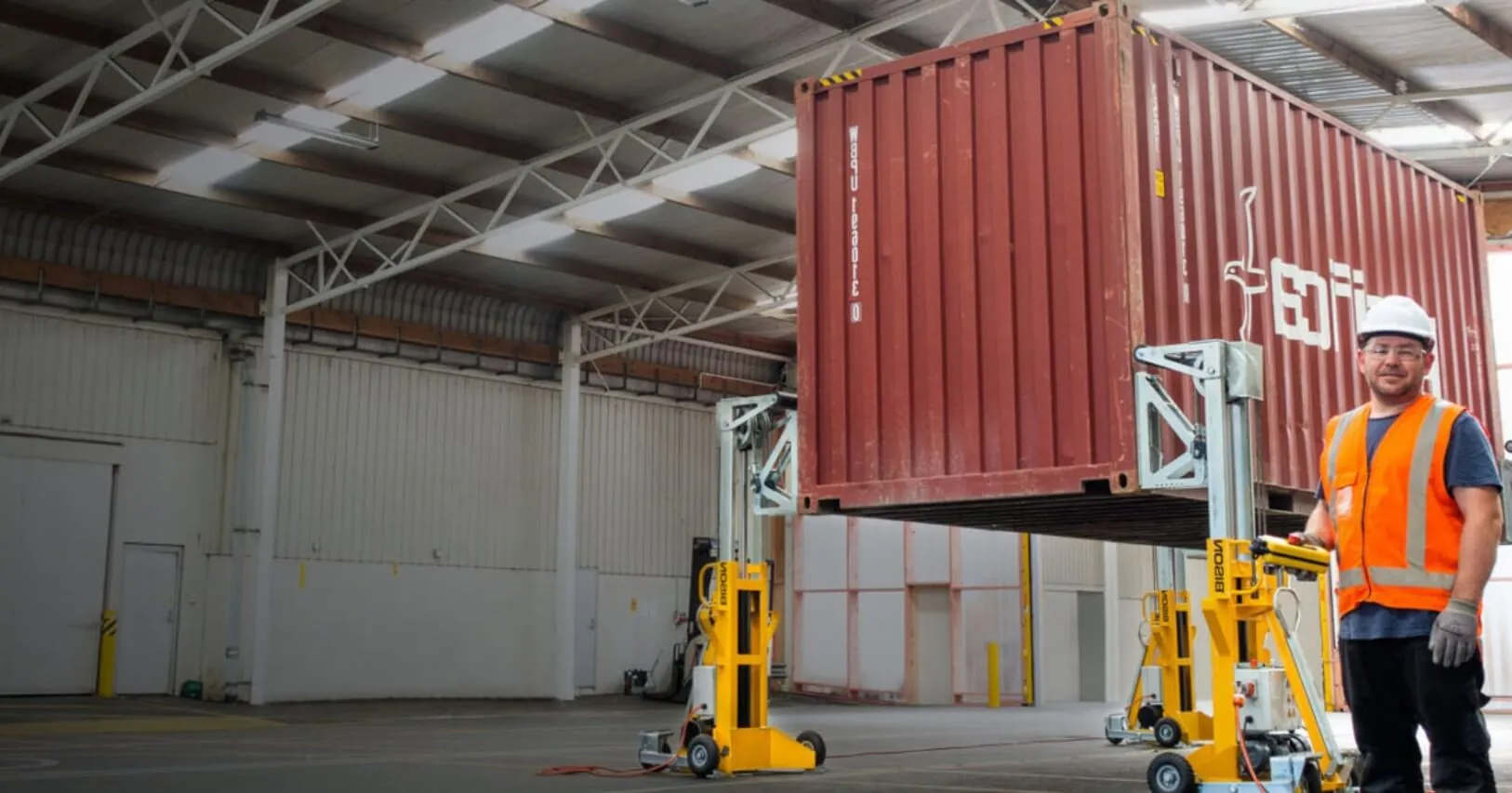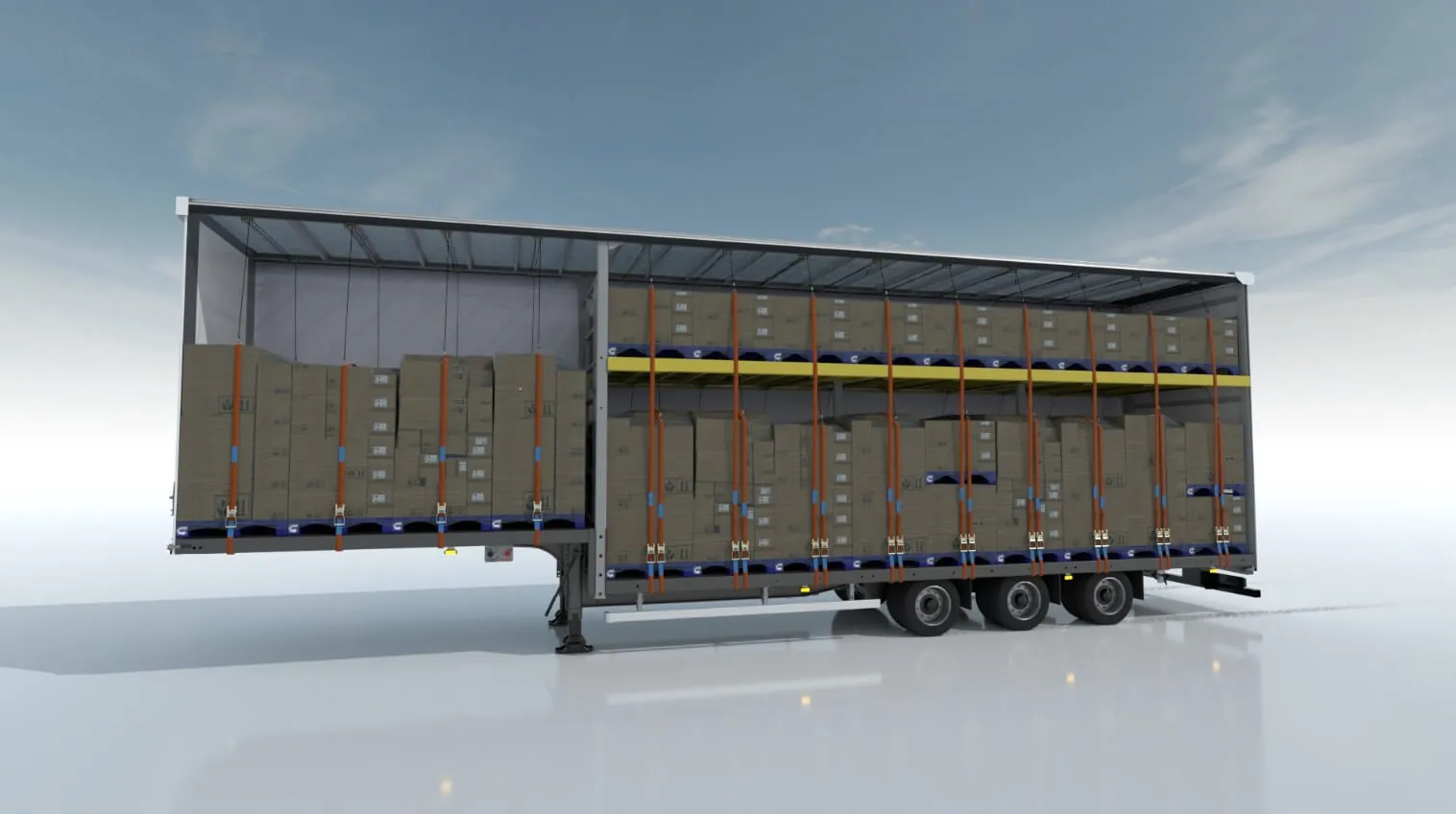15 Tips to Safely Unload a Shipping Container
Unloading a shipping container is one of the significant phases of the transportation process. It requires meticulous planning and execution. It is also crucial to have the right instruments, machinery, and tools in place.
Workers often don’t pay enough attention to the preparation part. Lack of care leads to severe damages and injuries. It is essential to plan the container unloading procedure as it impacts the following aspects:
- Cost-effectiveness.
- Space availability.
- Usage of labor resources.
- Service flexibility
- Prevention of unplanned downtime.
There are several methods for unloading shipping containers depending on factors such as the contents of the container, the location, available equipment, and specific needs.

Why Discard the ‘Traditional Unloading Method’?
To begin with, let’s define what’s meant by traditional shipping container unloading methods. This method includes:
- Involvement of more workers than actually needed.
- Manual efforts that are unnecessary.
- Containers are placed in a way they block the passages.
- Containers are placed on uneven ground.
- Not using safety gear.
- Not using needed straps, chains, and other types of sufficient tooling.
Not knowing how to unload a container safely, as it was said previously, leads to severe consequences. Let’s consider them as reasons to discard the traditional methods. These are the following:
- Increased risks of falls and injuries.
- Increased risks of damaging container boxes and cargo itself.
- Increased risks of losing different items.
- Long handling time of relocating cargo.
- Inability to properly unload from other container boxes.
So, there are all good reasons to have appropriate safety measures to unload a shipping container in place.
Let’s Find Out What Measures You Need to Take to Unload Your Shipping Container Safely
The “art” of handling cargo can hardly be whittled down to a few pieces of advice for unloading a shipping container. However, let’s review the most crucial ones:

Be Careful With Maneuvering and Placing Shipping Containers
Once the place or the ground is made ready for unloading of the shipping container, the next step is to make sure the container is delivered to the available space safely. Make sure there is always a person involved as an assistant to a driver.
During maneuvers, it’s vital not to interfere with other vehicles and not to cause traffic jams. Additional mirrors, good lighting, and sufficient traffic regulations will be a great contribution to the process of unloading containers safely.
Don’t forget to check for broken or loose seals on the container doors. If they are present, strap them properly before tilting the container. Then, ensure the container is placed on a leveled surface. If required, install container support legs with the same height settings.
Look for Ways of Preventing Damages While Opening a Container
Learn the information on the contents of the container before executing any container unloading methods. Based on the obtained data, you need to arrange for the required unloading equipment. Do not try to do it on your own if you don’t have prior experience handling it. Always get in touch with professionals to avoid causing any injuries to your staff while unloading shipments.
During the voyage, some items inside a container may change their positions if they are not adequately secured. Hence, while opening the door, always exercise extra caution. Open them at arm’s length and take a few steps back immediately. This will eliminate the possibility of anyone getting hurt.
Containers are often disinfected to keep pests at bay. These chemicals are potentially hazardous for human beings. Therefore, leave these containers opened for some time before allowing anyone to enter them.
Use bolts that inhibit an unexpected opening of the doors and a smooth sloping ramp when a loading bay is not available for easy access.

Choose Suitable Means of Unloading And Routes
Depending on the goods and weight, different containers require different offloading equipment. Cranes, forklifts, and self-offloading trailers are commonly used to unload a shipping container. However, sometimes additional robust steel supports are also required to maintain balance and avoid tipping off the load.
To unload a shipping container safely, arrange a special spot for your truck. Ideally, this place should be free from other heavy vehicles and far from the crowd. If you don’t have such a place available, or it requires extra money, make sure you take up the loading at odd hours or non-operational times. This way, you will avoid accidents and damages.
Make use of machinery, such as conveyor belts or forklifts, whenever you can avoid manual unloading. Always plan the passages ahead which you will be moving your cargo through.
Release Transport Restraints Correctly
Remember to inspect the goods before proceeding with transport restraint releasing. This will ensure there is no chance of failure that can lead to a fall once straps are removed.
If all the items inside the shipping container are strapped, remove one strap at a time. There may be items that support other items on the top or behind. In such a case, don’t remove the item without strapping the rest of them securely.

Look for Ways of Preventing Falls and Injuries During Unloading and Transporting
Secure your staff with appropriate clothing, heavy-duty boots, and gloves for the sake of their safety while unloading boxes from the container. Keep an eye on the quality of the material your clothing is made of, as even slight negligence could cause harm.
Try to unload the container in natural or daylight, as a nicely lit-up area can maximize the visibility inside the container. If you choose to operate during the night when there is less fuss, provide enough lighting to make the inside of the container visible. Install battery-powered lights if natural lighting is limited.
Eventually, it is essential to exercise standard safety practices with these heavy-duty shipping containers. Training the staff and making them aware of the hazards will reduce any chances of injury while offloading and unloading shipping containers.
You should also ensure that no one moves around the truck while the unloading is in progress.
Safety Tool Checklist for Unloading a Shipping Container
Let’s find out what must-have elements you should have to successfully unload a container.
- Heavy-duty boots and gloves.
- Battery-powered lights.
- Sloping ramp.
- Bolts.
- Cranes.
- Forklifts/Conveyor belts.
- Self-offloading trailers.
Use this container unloading checklist before starting work.
Final Thoughts
By now, you should be pretty aware of how to unload a container safely. First, you should give up the traditional shipping methods and all the related issues. Then, you should approach unloading a container thoroughly. It includes preventing damages to cargo and injuries to workers, avoiding traffic jams and item losses, using appropriate means of transportation, and more.
Should you need a shipping container solution — consider contacting Pelican Containers. We are a provider of new and used delivery container boxes for cars, showrooms, home buildings, hospitality solutions, mobile offices, and more. Every offer is intended to outperform other offers on the market in terms of end price, quality, and product lifespan.
Pelican Containers has been around for years, completing the most challenging product and delivering both — fully-fledged and low-cost solutions. We work with individual customers and businesses. Contact us now to claim a free quote.
What Type of Truck will be Used To Deliver your Shipping Container?
When buying or renting a shipping container, one of the most important factors to consider is delivery. You need to know the facts regarding delivery whether you’re planning a backyard retreat, a brand new retail concept, or a creative art studio. 1. Semi Trailer : A semi-trailer uses a crane or forklift to unload your cargo container, making it the most cost-effective way of delivery. 2. Tilt tray: The end of a tilt tray trailer being lowered to the ground. A winch is frequently used to help the container move off in a controlled manner. 3. Side loader: Your container will be picked up on both ends by a side loader truck that will drop onto your site right next to the vehicle. 4. Crane truck: When a side loader and tilt tray are unable to access your site, this method is used. Deliveries may be made over walls and fences with the help of a crane truck. You’ve got questions or just want to discuss your options? Contact us today and we’ll be happy to assist you!
FAQ
How long does it take to unload a 40ft standard container?
Depending on the transportation and the number of workers involved, it may take roughly 6-10 hours to fully unload a 40ft standard container.
What should you never do when loading or unloading a shipping container?
It’s important not to neglect safety precautions such as wearing safety gear, inspecting straps, and securing both doors and containers.
How long do you have to unload a shipping container?
As the rule, a standard 20ft container should take no longer than 3 hours to safely and completely unload.

 Vanessa Joy
Vanessa Joy